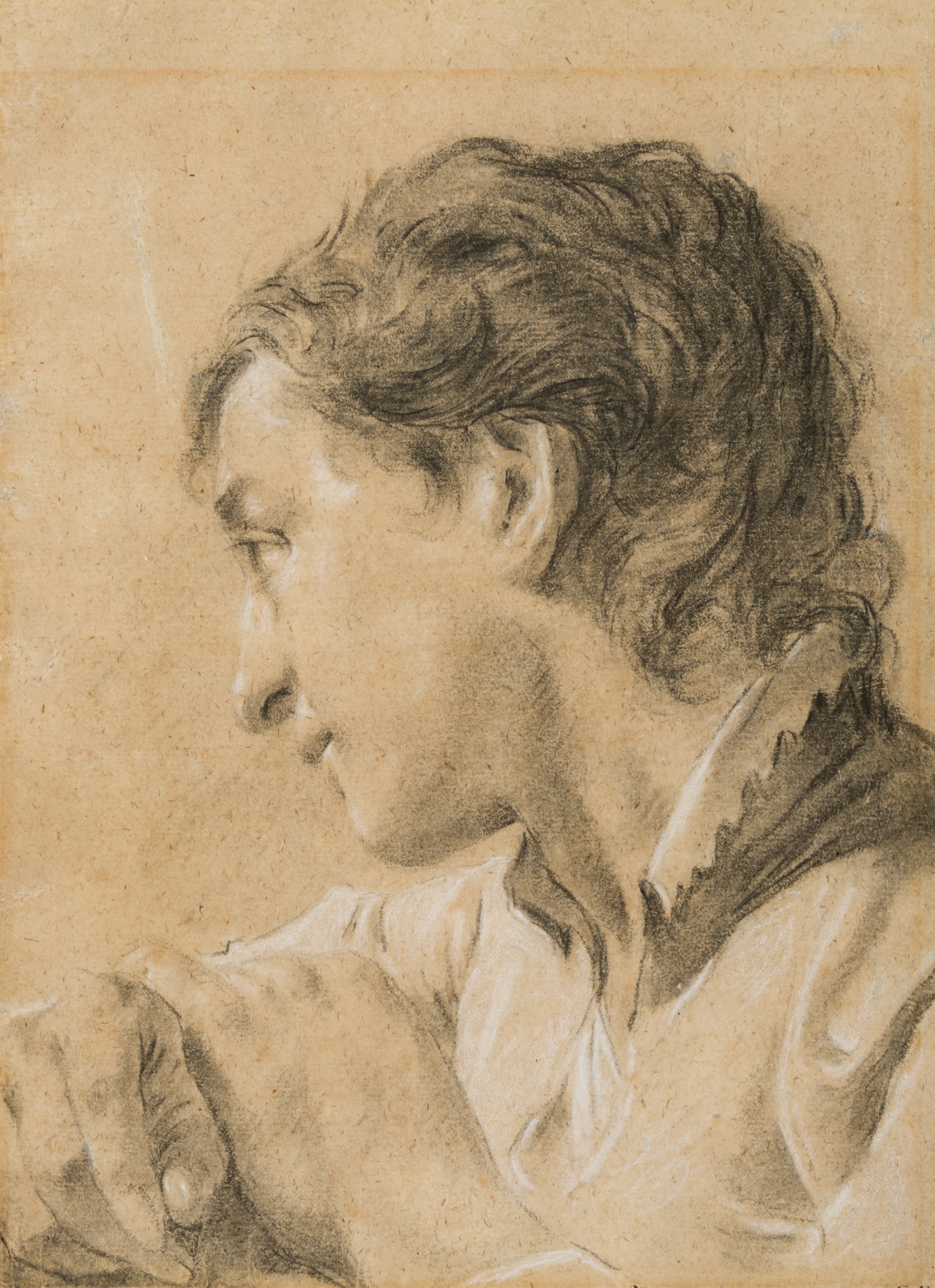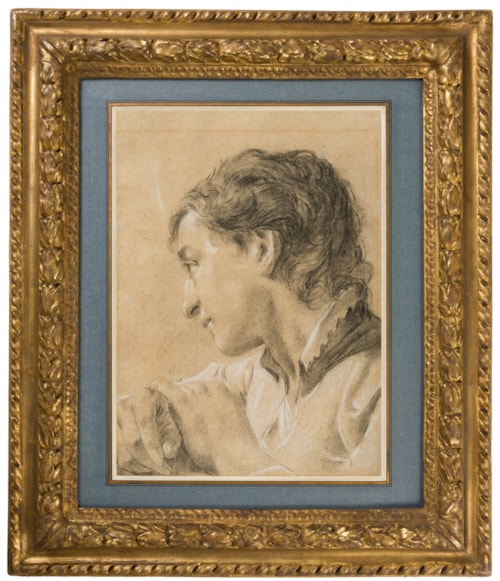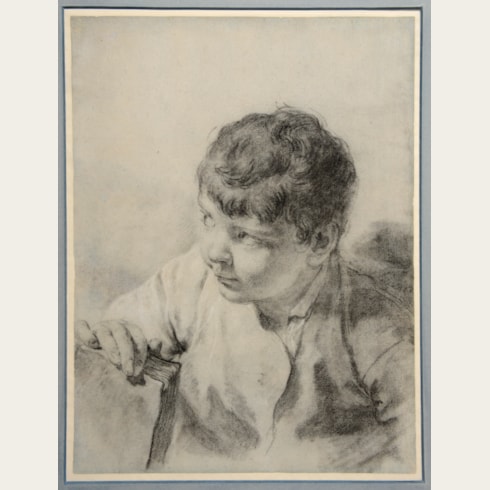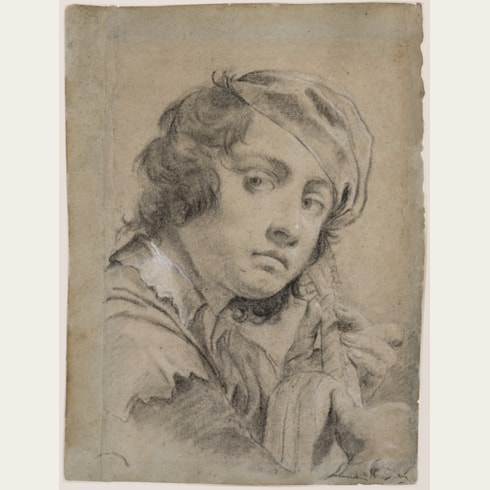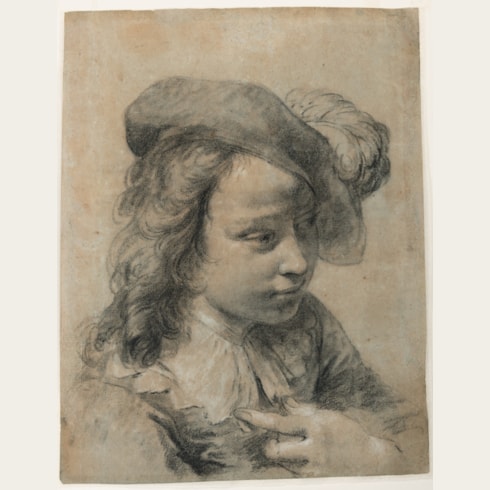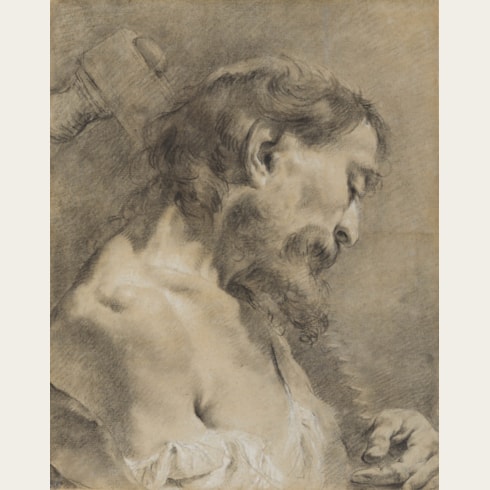Giovanni Battista PIAZZETTA
(Venice 1682 - Vencie 1754)
A Young Man Looking Down to the Left
347 x 253 mm. (13 5/8 x 10 in.) [sheet]
As Alice Binion has noted of the teste di carattere, ‘In most of these drawings, made from life, Piazzetta dispensed with shadows. The extraordinary tactility of the figures was obtained by his singular technique of modelling by smudging the chalk instead of using hatching.’ The young boy here depicted may be tentatively identified as the artist’s eldest son, Giacomo Giusto Piazzetta, who was born in December 1725 and who appears in a number of his father’s drawings from about the age of ten onwards. The same model is found in other drawings by the artist, such as two sheets in the Accademia in Venice and another in the Harvard University Art Museums in Cambridge, Massachusetts. A somewhat similar head occurs in a drawing by Piazzetta of three heads, formerly in the collection of the Duc de Talleyrand.
The present sheet was reproduced, in reverse, in an engraving by the printmaker and publisher Teodoro Viero (1740-1819), which is part of a series of twelve prints of male and female heads after drawings by Piazzetta that were published in 1767, thirteen years after the artist’s death. The engraving bears a caption which seems to refer to the sitter’s gaze and enigmatic smile: ‘L’immoto sguardo, ed il sereno aspetto / Di tranquillo piacer spiega il diletto.’ (‘The gaze is unmoved, and the face cheerful / pleasure results from quiet enjoyment.’).
An almost identical head appears in a drawing by Piazzetta of the heads of an old man and a boy, one of thirty-six teste di carattere drawings acquired by King George III from Consul Joseph Smith in 1762 and today in the Royal Collection at Windsor Castle.
The present sheet bears an anonymous collector’s mark G. F which is found on a handful of Italian, German and Dutch drawings, including sheets in the British Museum, the National Galleries of Scotland in Edinburgh and the Ashmolean Museum in Oxford. It has been suggested that the mark may have belonged to an early 19th century English collector, since one of the drawings bearing this mark is further inscribed ‘Purchased in Italy in 1816 G.F.’.
Active as a painter, draughtsman, printmaker and book illustrator, Giambattista Piazzetta was first trained by his father, a sculptor, and later was a pupil of Antonio Molinari. A brief stay in Bologna between 1703 and 1705 introduced him to Giuseppe Maria Crespi, whose paintings, like those of Guercino and the Carracci, were to have a particular influence on Piazzetta’s early work. Back in Venice by about 1705, Piazzetta was registered in the Fraglia, the Venetian painter’s guild, by 1711. He worked in Venice for the remainder of his career, painting genre scenes, devotional representations of single saints, portraits and numerous altarpieces for local churches, as well as his only large-scale decoration; the ceiling of Saint Dominic in Glory for the church of SS. Giovanni e Paolo, completed in 1727. He also produced several hundred designs for book illustrations, many of which were commissioned for books issued by the publisher Giovanni Battista Albrizzi, notably an elaborate edition of Torquato Tasso’s epic poem Gerusalemme Liberata that appeared in 1745. By the later part of his career Piazzetta enjoyed considerable renown, both within Venice and abroad, as a draughtsman and painter. In 1754, the year of his death, he was elected principe of the Accademia dei Pittori in Venice.
Provenance
Dr. and Mrs. Victor Bloch, London
Their sale, London, Sotheby’s, 19 November 1963, lot 89 (bt. Littson for £420)
Mathilda (Tillie) Goldman, New York
Her posthumous sale, New York, Christie’s, 23 January 2002, lot 7
Private collection.
Literature
Exhibition

